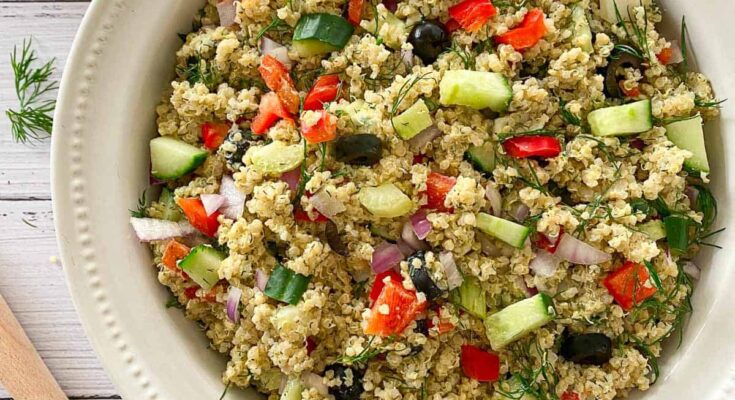Quinoa Pasta: A Nutritious and Gluten-Free Pasta Alternative
Quinoa pasta is a type of pasta that is made from quinoa flour, which is derived from the quinoa grain. Quinoa is a pseudocereal that is naturally gluten-free and has gained popularity in recent years due to its numerous health benefits. Quinoa pasta offers a nutritious alternative to traditional wheat-based pasta and is suitable for individuals with gluten intolerance or those looking for a healthier option.

One of the main advantages of quinoa pasta is its high nutritional value. Quinoa is considered a complete protein, meaning it contains all nine essential amino acids that our bodies need. This makes quinoa pasta a great choice for vegetarians and vegans who may struggle to get enough protein from plant-based sources. Quinoa is also rich in fiber, vitamins, and minerals such as magnesium, iron, and zinc, which contribute to overall health and well-being.
In terms of taste and texture, quinoa pasta is often described as having a slightly nutty flavor and a slightly chewier texture compared to traditional wheat pasta. It has a similar appearance to regular pasta, making it a versatile option that can be used in a variety of dishes. Quinoa pasta can be cooked and served in the same way as regular pasta, whether it’s in a classic marinara sauce, a creamy Alfredo sauce, or in a cold pasta salad.
Rising Demand for Quinoa and Market Outlook
According to the Food and Agriculture Organization (FAO) of the United Nations, in 2019, the global quinoa production volume was around 162 thousand metric tons which increased to 219 thousand metric tons in 2020.
Newly-released quinoa pasta market analysis report by Fact.MR reveals that global sales of the quinoa pasta market in 2022 were held at US$ 74 million. It also states that the market is expected to reach a valuation of US$ 270 million by 2033.
Get a free sample copy of the report (PDF)
Quinoa pasta’s popularity has grown not only among individuals with dietary restrictions but also among health-conscious consumers who are looking for alternative grains and whole foods to incorporate into their diets. It can be found in many grocery stores and health food stores, and there are also numerous recipes available online that showcase the versatility of quinoa pasta.
Quinoa pasta is a nutritious, gluten-free alternative to traditional wheat pasta. It offers a complete protein source, is rich in fiber and essential nutrients, and can be used in a variety of dishes. Whether you have dietary restrictions or simply want to explore healthier food options, quinoa pasta is a delicious and nutritious choice to consider.
Key Factors for Businesses to Consider

1. Quality sourcing: Ensure that the quinoa used to make the pasta is of high quality and sourced from reputable suppliers. This includes verifying that the quinoa is organic, non-GMO, and sustainably produced. Building strong relationships with quinoa farmers and cooperatives can help ensure a consistent and reliable supply of high-quality quinoa.
2. Product development and innovation: Continuously invest in research and development to create new and innovative quinoa pasta products that cater to different dietary preferences and trends. This could include experimenting with different shapes, flavors, or incorporating other nutritious ingredients into the pasta.
3. Marketing and branding: Develop a strong brand identity and marketing strategy that highlights the unique selling points of quinoa pasta, such as its nutritional benefits, gluten-free nature, and sustainability. Emphasize the quality, taste, and versatility of the product to attract customers and differentiate the brand from competitors.
4. Distribution and partnerships: Establish a solid distribution network to ensure that the quinoa pasta reaches a wide customer base. This could involve partnering with retailers, wholesalers, or online marketplaces that align with the brand’s values and target market. Collaborating with restaurants, cafes, or food service providers can also help increase exposure and create new avenues for sales.
5. Consumer education and awareness: Educate consumers about the benefits of quinoa pasta through various channels, such as social media, website content, and product packaging. Provide clear information about the nutritional value, cooking instructions, and recipe ideas to encourage consumers to try and incorporate quinoa pasta into their diets.
6. Quality control and certification: Implement stringent quality control measures to ensure consistency and adherence to food safety standards. Obtaining relevant certifications, such as organic or gluten-free certifications, can enhance the credibility and trustworthiness of the brand.
7. Customer feedback and engagement: Actively seek feedback from customers to understand their preferences, address any concerns, and improve the product or service accordingly. Engage with customers through social media, email newsletters, or loyalty programs to build a loyal customer base and foster brand loyalty.
By focusing on these aspects, a business can position itself for growth and success in the field of quinoa pasta. It is important to stay informed about market trends, consumer preferences, and industry developments to adapt and stay competitive in the ever-evolving food industry.
Also read:
1. Plant-Based Nutrition: A Visionary in the Advancement of Vegan Supplements



